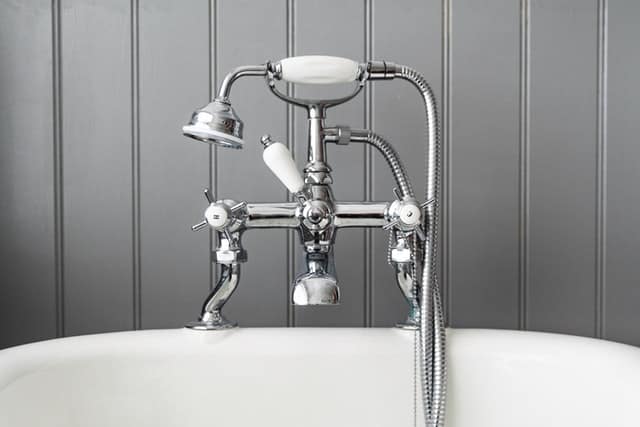Intelligent Approaches to Protect Your Plumbing in Chilly Temperatures
Intelligent Approaches to Protect Your Plumbing in Chilly Temperatures
Blog Article
In this article down the page you can discover some extremely good information and facts around Prevent Freezing and Bursting Pipes.

All property owners that stay in temperate climates must do their best to winterize their pipes. It is something you need to do during fall prior to deep wintertime absolutely begins. Failing to do so can lead to disaster like frozen, fractured, or burst pipes. If the weather outside is shocking, below are some useful winterizing hacks to maintain your plumbing system shielded also.
Turn On the Faucets
When the temperature declines and also it seems as if the icy temperature will certainly last, it will certainly aid to turn on your water both inside as well as outdoors. This will certainly maintain the water moving through your plumbing systems. On top of that, the activity will certainly decrease the cold process. Significantly, there's no requirement to turn it on full blast. You'll wind up wasting gallons of water by doing this. Instead, go for regarding 5 decreases per min.
Open Up Cabinet Doors Hiding Plumbing
When it's chilly outside, it would be practical to open up cupboard doors that are camouflaging your pipelines. Doing this small technique can keep your pipelines warm and also limit the possibly dangerous outcomes of freezing temperature levels.
Take Some Time to Wrap Exposed Piping
One simple as well as nifty hack to heat up freezing pipelines is to cover them with warm towels. You can cover them initially with towels. After safeguarding them in place, you can pour boiling water on the towels. Do it gradually to let the towels soak up the fluid. You can also use pre-soaked towels in hot water, just do not neglect to put on safety handwear covers to protect your hands from the warmth.
Attempt a Hair Dryer or Warmth Gun
When your pipes are almost freezing, your trusty hair dryer or heat weapon is a godsend. Bowling hot air straight into them might help if the hot towels do not assist displace any kind of clearing up ice in your pipelines. Nonetheless, do not make use of other objects that generate direct fires like a strike lantern. This can result in a bigger disaster that you can not control. You might end up damaging your pipes while trying to thaw the ice. As well as over time, you may even wind up shedding your home. Beware!
When Pipelines are Frozen, close Off Water
Switch off the primary water valve quickly if you discover that your pipelines are completely icy or almost nearing that stage. You will generally locate this in your basement or utility room near the heating unit or the front wall closest to the street. Turn it off immediately to stop additional damage.
With even more water, more ice will certainly load up, which will at some point lead to rupture pipes. If you are not sure about the state of your pipelines this winter season, it is best to call a specialist plumber for an assessment.
All property owners that live in temperate environments must do their best to winterize their pipelines. Failing to do so can lead to disaster like icy, split, or burst pipes. If the warm towels do not assist remove any kind of settling ice in your pipes, bowling hot air straight right into them may help. Turn off the primary water shutoff promptly if you observe that your pipes are totally icy or almost nearing that phase. With more water, even more ice will certainly load up, which will eventually lead to rupture pipes.
PREVENT YOUR PIPES FROM FREEZING THIS WINTER
A Leading Cause of Property Damage
When the weather is taking a deep nose dive into the cold dreary days, the risk of your pipes freezing and potentially bursting skyrockets. Unfortunately, during these cold dreary months, burst pipes are the most common denominator for property damage. The pipes that are most at the risk are those that are in areas where it is most cold in your home. For instance, pipes located in interior places such as basements, attics, and your garage. Unfortunately, that doesn’t mean that the pipes running through your cabinets or exterior walls can’t freeze. Good news, however, is that you can do things to help prevent pipes from freezing.
How to Prevent Pipes From Freezing
Once the temperature starts to drop during the winter, you should be taking the proper measures needed to ensure that your pipes stay warm and that there is circulation of water through them. Some steps that experts may recommend could go against your better judgement when it comes to saving water and heat. However, it would go without saying that when expenses are compared, damaged pipes could put a bigger dent in your wallet than a water bill.
What Can I Do?
Keep your garage door closed. This is very important, especially if you have water supply lines running through your garage. Open your kitchen and bathroom cabinets to allow warm air to circulate through them. Allow air circulation throughout your home. Keeping the interior doors open will once again allow the warm air to circulate inside your home. Ensure your thermostat is running the same temperature throughout the night and day. If you plan to be away from home during the cold months, set your temperature no lower than 55° F. This should provide enough heat to keep the pipes warm and prevent any remaining water inside the pipes from freezing. For more of a long-term solution, add insulation to attics, basement, and other crawl spaces around your home. By allowing your faucet to drip, it will alleviate pressure in the system. This is important because the pressure that is created between the blockage and the faucet can potentially cause the pipes to burst. Allowing the faucet to drip will prevent the pressure from building up, therefore keeping the pipes from bursting. Seal any cracks, openings, and crawl spaces around your home to prevent cold air from coming inside. This keeps your pipes-not to mention your home-warmer and less susceptible to issues caused by freezing temperatures. For the pipes in your home that are easily accessible, applying electrical tape to them might prevent them from freezing over. This is a quick fix, as you can apply the tape directly to the pipe. There are two options for heating tapes. One turns on and off by itself when it senses heat is needed. The other type of heating tape needs to be applied when heat is needed and removed when not necessary. If you have exposed pipes in your home, you can check this website to take a look at a few options that would be available at a shop near you.

As a keen reader about Winterizing Your Pipes, I think sharing that piece of content was really helpful. For those who enjoyed our blog posting plz be sure to share it. Thanks a lot for your time spent reading it.
Overflow resolution available. Report this page